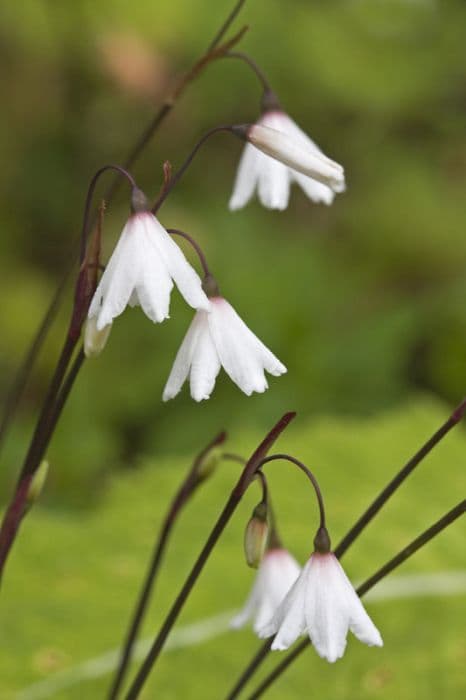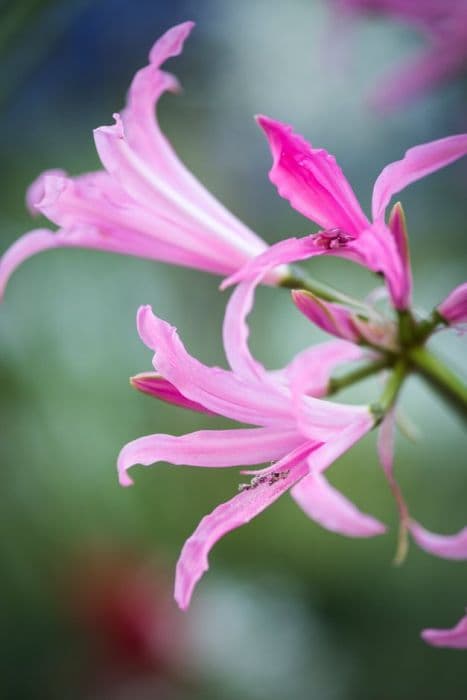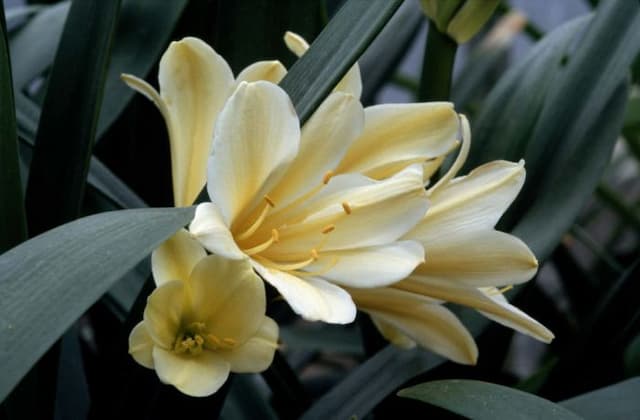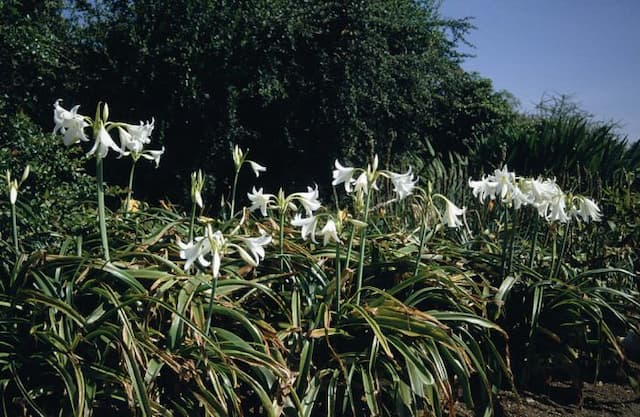Dwarf Daffodil Narcissus minor 'Little Gem' (1)

ABOUT
The Narcissus minor 'Little Gem', often referred to as the dwarf daffodil or mini daffodil, presents a charming and delicate appearance that is well-suited to many garden settings. This plant typically features vibrant, cheerful blooms that have a classic daffodil shape, with a central trumpet-shaped corona surrounded by six petal-like tepals which are usually a lighter shade. The colors are reminiscent of spring, with the trumpet often a deep golden yellow and the surrounding tepals may be a paler yellow, giving the flower a two-toned effect. The foliage is slender and strappy, forming a tuft of green that cradles the flowers. This variety, like other daffodils, emerges from a bulb underground and once in bloom, it offers a lovely display that is often associated with the beginning of the growing season in many regions. Overall, Narcissus minor 'Little Gem' is valued for its smaller, proportionate flowers that add a touch of elegance to rock gardens, borders, and containers.
About this plant
 Names
NamesSynonyms
Dwarf Narcissus, Little Gem Daffodil, Miniature Daffodil.
Common names
Narcissus minor 'Little Gem'
 Toxicity
ToxicityTo humans
The plant commonly known as the daffodil is toxic to humans. All parts of the plant contain poisonous alkaloids such as lycorine and others, which can cause symptoms if ingested. These symptoms include nausea, vomiting, abdominal pain, and diarrhea. In severe cases, ingesting daffodils can lead to cardiac arrhythmias, hypotension, tremors, and even life-threatening complications.
To pets
The daffodil is also toxic to pets, including dogs and cats. The plant contains alkaloids that can cause vomiting, salivation, diarrhea, convulsions, low blood pressure, tremors, and cardiac arrhythmias. Ingesting even a small amount of any part of the daffodil, including the bulb, which is the most toxic part, can result in poisoning and potentially severe health consequences for pets.
 Characteristics
CharacteristicsLife cycle
Perennials
Foliage type
Deciduous
Color of leaves
Green
Flower color
Yellow
Height
6 inches (15 cm)
Spread
3 inches (7.6 cm)
Plant type
Bulb
Hardiness zones
4
Native area
Europe
Benefits
 General Benefits
General Benefits- Compact Size: This daffodil variety is small and can fit into tighter spaces in the garden or in pots.
- Early Spring Blooms: Offers bright, cheerful flowers in early spring when not many other plants are in bloom.
- Low Maintenance: Requires minimal care once established, making it ideal for busy gardeners.
- Attracts Pollinators: Bees and other beneficial insects are attracted to the flowers, aiding in the pollination of nearby plants.
- Deer Resistant: Less likely to be eaten by deer, protecting the display of spring blossoms.
- Drought Tolerant: Once established, this plant can tolerate periods of dry conditions.
- Naturalizing: It has the ability to spread and naturalize in an area, creating a larger display over time.
 Medical Properties
Medical PropertiesThis plant is not used for medical purposes.
 Air-purifying Qualities
Air-purifying QualitiesThis plant is not specifically known for air purifying qualities.
 Other Uses
Other Uses- Narcissus minor 'Little Gem', also known as Dwarf Daffodil, can be utilized as an educational tool in botanical studies to demonstrate plant lifecycle, bulb growth, and flowering stages.
- The Dwarf Daffodil's sturdy stems and long-lasting blooms make it ideal for crafts such as flower pressing, allowing for the creation of natural art pieces.
- These flowers can be used in photography projects, providing a vibrant and consistent subject for macro photography and studies on light and composition.
- Dwarf Daffodils can serve as a natural pest repellent in gardens, as some pests may avoid the area due to the bulbs' toxicity.
- The blossoms of the Dwarf Daffodil can be a food source for pollinators like bees when planted strategically in areas lacking in early spring blooms.
- In mild climates, leaves of the Dwarf Daffodil can be used as an indicator of seasonal change, symbolizing the onset of spring.
- The bulbs of the Narcissus plant family, to which the Dwarf Daffodil belongs, can be used in dye-making, providing a yellow-orange color when treated properly.
- Due to their ability to naturalize and spread, they can be used as ground cover in suitable climates, reducing soil erosion and suppressing weeds.
- Narcissus minor 'Little Gem' can play a role in companion planting, potentially enhancing the growth of certain vegetables by deterring unwanted pests.
- The distinctive shape and color of Dwarf Daffodils can inspire artists and designers who are looking for organic forms and patterns for use in their work.
Interesting Facts
 Feng Shui
Feng ShuiThe Daffodil, a common name for Narcissus minor 'Little Gem', can be used in Feng Shui as a symbol of wealth, good fortune, and rejuvenation, especially when placed in the wealth corner of a home or office (the southeast).
 Zodiac Sign Compitability
Zodiac Sign CompitabilityThe Daffodil is not used in astrology practice.
 Plant Symbolism
Plant Symbolism- Renewal and New Beginnings: The Narcissus, particularly in the context of its blooming in early spring, often symbolizes rebirth and the arrival of new beginnings as it is one of the first flowers to emerge from the winter cold.
- Self-love: Originating from the Greek myth of Narcissus, this plant is often associated with self-love and narcissism, reflecting on the story of the youth who fell in love with his own reflection.
- Vanity: Closely linked to self-love, the Narcissus can also represent vanity and excessive self-admiration.
- Prosperity: In some cultures, the Narcissus is seen as a symbol of wealth and success.
- Hope: The flower is sometimes used to convey a message of hope and encouragement, possibly due to its resilience and the way it signals the nearing end of winter.
 Water
WaterThe Dwarf Daffodil 'Little Gem' should be watered thoroughly when the soil feels dry to the touch during its growing season. It's best to water it once a week, allowing the top inch of soil to dry out between waterings. The actual watering frequency depends on the weather conditions, but generally, give them about 1 inch of water per week, either from rainfall or manual watering. During the dormant period after the flowers have faded, reduce watering substantially to prevent bulb rot.
 Light
LightDwarf Daffodils, such as 'Little Gem', thrive best in full sunlight to partial shade. They should be positioned where they will receive at least 6 hours of direct sunlight daily. However, in extremely hot climates, they benefit from light afternoon shade to prevent overheating.
 Temperature
TemperatureThe Dwarf Daffodil 'Little Gem' is hardy and can survive temperature extremes from about 15°F to 75°F. Ideal temperatures for vigorous growth range between 50°F to 70°F. They are winter-hardy and can withstand cold snaps in the spring, but prolonged temperatures below the minimum range may harm the bulbs.
 Pruning
PruningPruning the Dwarf Daffodil 'Little Gem' is basically deadheading after flowering and removing yellow or dead foliage once it has died back naturally. Clip off spent flower heads to prevent seed formation, but allow the leaves to remain until they have yellowed, which is typically six weeks after blooming. This allows the plant to store energy for next year's growth.
 Cleaning
CleaningNot needed
 Soil
SoilThe Dwarf Daffodil 'Little Gem' thrives in well-draining, moderately fertile soil with a pH range of 6.0 to 7.0. A mix containing loam, sand, and compost works well to provide the necessary drainage and nutrients.
 Repotting
RepottingDwarf Daffodil 'Little Gem' bulbs should be repotted every 1 to 2 years to prevent overcrowding and to replenish the soil, ideally after the foliage has died back post-blooming season.
 Humidity & Misting
Humidity & MistingDwarf Daffodil 'Little Gem' tolerates a wide range of humidity levels; however, it is not demanding in terms of atmospheric humidity, making it suitable for typical outdoor conditions.
 Suitable locations
Suitable locationsIndoor
Place Dwarf Daffodil 'Little Gem' in bright, indirect light inside.
Outdoor
In well-drained soil, Dwarf Daffodil 'Little Gem' requires full to partial sun.
Hardiness zone
4-9 USDA
 Life cycle
Life cycleNarcissus minor 'Little Gem', commonly known as Little Gem daffodil, begins its life cycle as a bulb planted in the ground during the fall. It experiences a period of dormancy during the winter months, where it relies on the cold period to trigger its subsequent growth. In early spring, growth resumes and shoots emerge from the soil, followed by the development of slender, green leaves and a singular central flower stalk that bears a bright, yellow flower, typically between March and April. After flowering, the plant focuses on photosynthesis for the production of food, which is stored in the bulb for the next growing season. Once the leaves yellow and die back in late spring or early summer, the plant goes into dormancy, conserving energy in the bulb. The annual cycle restarts again in the fall, when temperatures drop signaling the bulb to prepare for the next growing season.
 Propogation
PropogationPropogation time
Late summer to early autumn
Propogation: The most popular method for propagating the Narcissus minor 'Little Gem', commonly known as the Dwarf Daffodil, is through division of bulbs. This process is typically done after the foliage has yellowed and died back, usually in late summer or fall. To propagate, carefully dig up the bulbs and gently separate any offsets from the parent bulb. These offsets are smaller bulbs that have formed at the base of the main bulb and are a clone of the parent plant. Once separated, replant the offsets at a depth of about 6 inches (15.24 centimeters) and spaced approximately 3 inches (7.62 centimeters) apart to allow room for growth. It is important to ensure that the planting site is well-drained and receives adequate sunlight to promote proper growth. After replanting, provide water to help establish the bulbs, but be careful not to overwater as this can cause rot.









